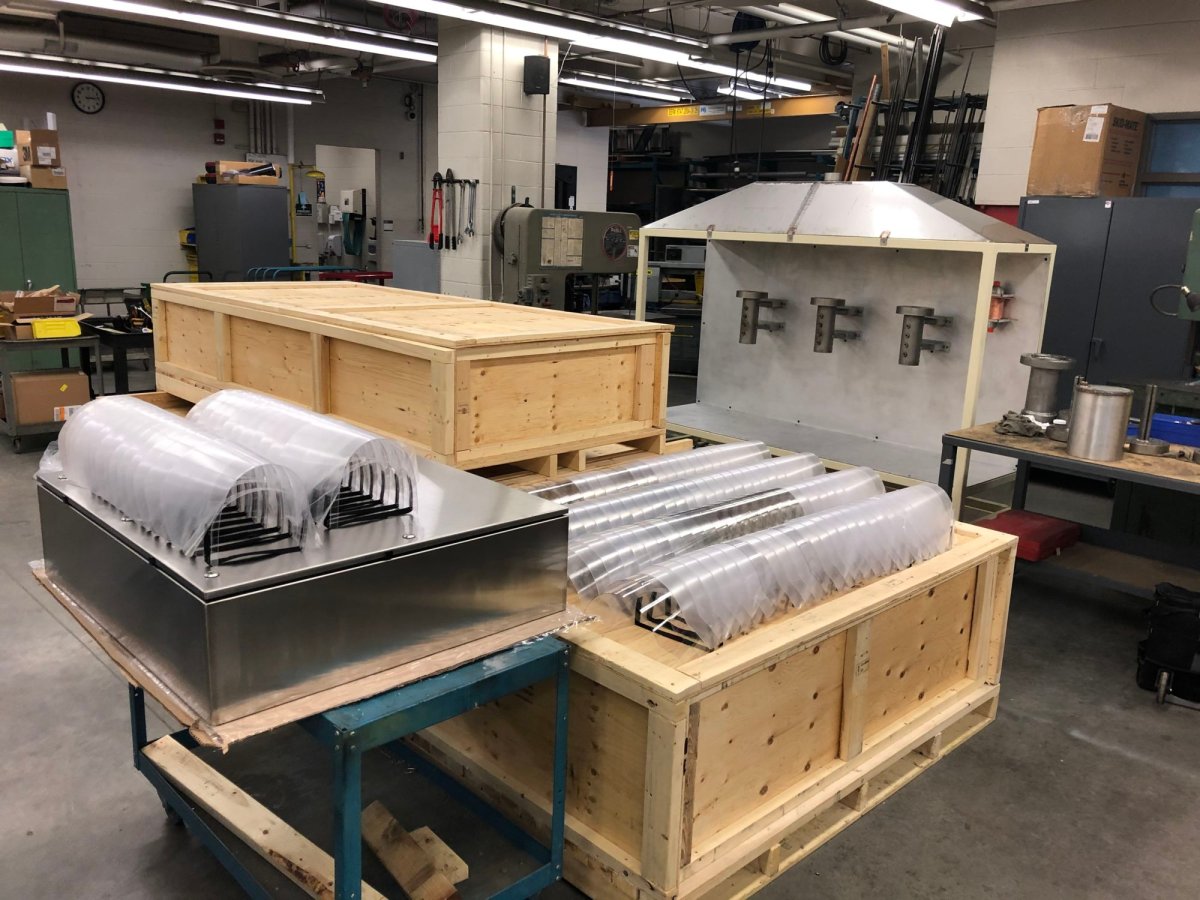By the end of the day on Tuesday, 80 medical face shields designed and produced at Western University will be in a London, Ont., hospital for testing. By next week, as many as 1,000 could be used by front-line health-care workers.

The quick turnaround is thanks to a collaborative effort that began in University Machine Services (UMS), an ancillary service based out of the engineering department of Western University in response to the growing demand for personal protective equipment (PPE) amid the COVID-19 pandemic.
“I looked at my email last Sunday morning and there was an email that had been copied and sent through that quoted my current dean, Dr. Ken Coley, and Western’s provost, Andrew Hrymak, and they were talking about the 3D-printed face shields and whatnot, the headbands,” UMS manager Clayton Cook told Global News.
The UMS team is shearing and forming the polycarbonate PETG to create the shield and then attaching them to Velco fasteners designed and 3D-printed by Western’s Physics and Astronomy Machine Shop. Cook collaborated with Coley as well as senior academic and clinical leaders at Western’s Schulich School of Medicine and Dentistry to make sure the masks meet hospital standards.
“Hopefully, we can put 1,000 out to people next week.”
Currently, the shop is operating with just three people at a time to allow for social distancing.
“A few of our team members have spouses working at the hospital, so this really hit close to home. This wasn’t a job we had to do but when I mentioned it (to the team), everyone stepped up,” said Cook.
“It’s nice for the shop to do its part. I’ve been at Western for a long time, the shop’s been here for over 35 years. It’s nice to be able to give back to the campus and community.”
In a release, Western noted that local manufacturers, including General Dynamics Land Systems Canada, have offered to help with production, which would see an even greater output than the estimated 200-300 face shields a day that the shop can produce on its own.

Questions about COVID-19? Here are some things you need to know:
Health officials caution against all international travel. Returning travellers are legally obligated to self-isolate for 14 days, beginning March 26, in case they develop symptoms and to prevent spreading the virus to others. Some provinces and territories have also implemented additional recommendations or enforcement measures to ensure those returning to the area self-isolate.
Symptoms can include fever, cough and difficulty breathing — very similar to a cold or flu. Some people can develop a more severe illness. People most at risk of this include older adults and people with severe chronic medical conditions like heart, lung or kidney disease. If you develop symptoms, contact public health authorities.
To prevent the virus from spreading, experts recommend frequent handwashing and coughing into your sleeve. They also recommend minimizing contact with others, staying home as much as possible and maintaining a distance of two metres from other people if you go out.
For full COVID-19 coverage from Global News, click here.
- Trudeau says ‘good luck’ to Saskatchewan premier in carbon price spat
- Canadians more likely to eat food past best-before date. What are the risks?
- Hundreds mourn 16-year-old Halifax homicide victim: ‘The youth are feeling it’
- Vacation death: Cuba apologizes after Canadian family receives wrong remains










Comments